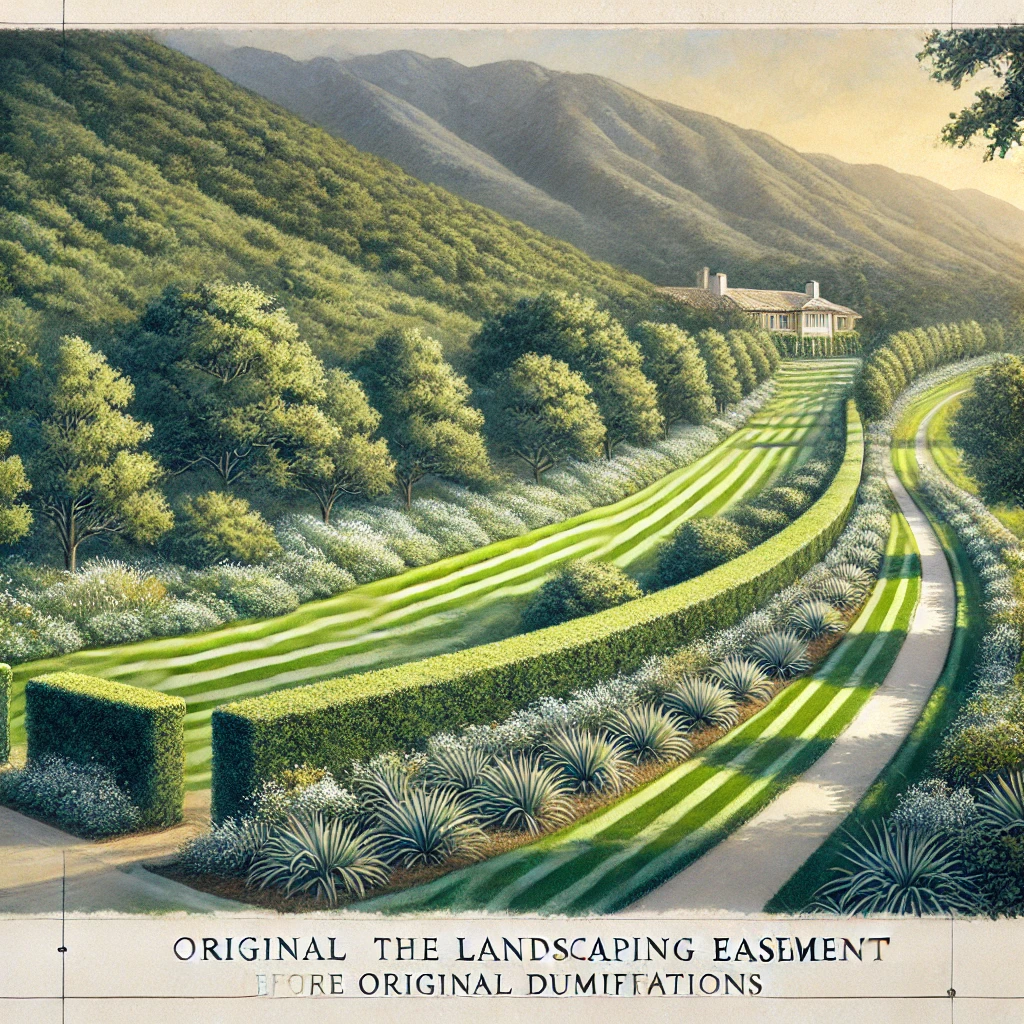The Montecito Country Club Landscaping Easement Dispute: A Comprehensive Guide
Introduction
The Montecito Country Club landscaping easement dispute has garnered attention as a significant case that highlights the complexities of property law and the importance of respecting easement agreements. This guide provides an in-depth look into the dispute, its legal implications, and actionable advice for property owners to avoid similar conflicts. Whether you are a property owner, legal professional, or simply curious about the case, this resource aims to offer clarity and comprehensive insights.
Background and Context
History of the Montecito Country Club
Nestled in the picturesque Montecito community, the Montecito Country Club is a historic landmark with a legacy of exclusivity and elegance. Its sprawling grounds include not just the club itself but also easements that serve various functional purposes, including access, maintenance, and landscaping.
What Is an Easement?
An easement is a legal agreement granting a party the right to use another’s land for a specific purpose. In this case, the Montecito Country Club held an easement over a portion of its adjacent property to ensure flexibility for future landscaping, maintenance, or development projects.
The Roots’ Landscaping Alterations
Kevin and Jeannette Root, property owners adjacent to the club, made significant changes to the land within the easement. These included removing an existing hedgerow, installing a retaining wall, and re-grading the area without obtaining prior permission from the club. This initiated a dispute that would soon escalate into a legal battle.
The Dispute: Key Details
Actions by the Roots
The Roots’ modifications were substantial and included:
- Removal of Existing Landscaping: They removed a hedgerow originally maintained by the club.
- Installation of New Features: The couple added a new hedge, a retaining wall, and other landscaping elements.
- Re-grading the Land: The alterations significantly changed the terrain.
These changes effectively impeded the club’s ability to use the easement for its intended purposes, such as creating cart paths or supporting greenskeeping activities.
Legal Actions Taken
The Montecito Country Club filed a lawsuit to enforce its rights over the easement. The case reached Santa Barbara Superior Court, where Judge Donna Geck presided.
Legal Analysis
The Court’s Findings
Judge Geck ruled in favor of the Montecito Country Club, affirming the validity of the easement and the club’s rights over the disputed land. The court issued a mandatory injunction requiring the Roots to:
- Remove all unauthorized landscaping.
- Restore the property to its original condition at their own expense.
Legal Precedents and Implications
The ruling underscores the principle that easements are legally binding agreements. Violating these agreements can lead to costly legal battles, mandatory restorations, and potential fines. Property owners must exercise caution and due diligence when making changes near or within easements.
The Restoration Process
The court mandated the Roots to restore the land under judicial oversight. This process involves:
- Landscaping Removal: Dismantling all unauthorized features.
- Restoration of Terrain: Returning the land to its original grade.
- Compliance Monitoring: Ensuring the restoration meets court-approved standards.
This serves as a cautionary tale for property owners to avoid unauthorized modifications.
Broader Implications for Property Owners
The Montecito Country Club landscaping easement dispute offers valuable lessons:
- Understanding Easements: Always consult property deeds and legal documents to identify existing easements.
- Seeking Approvals: Obtain written permission from easement holders before making any alterations.
- Avoiding Legal Risks: Engage legal counsel to assess the implications of proposed changes.
How to Avoid Landscaping Disputes
Checklist for Property Owners
- Review Property Documents: Familiarize yourself with any easements recorded on your property.
- Hire Experts: Work with surveyors and legal professionals to clearly delineate boundaries.
- Communicate with Neighbors: Establish open lines of communication to address potential conflicts early.
- Seek Permits and Permissions: Ensure all planned modifications are legally compliant and approved by relevant parties.
Case Study Comparison
Similar easement disputes have occurred across California. Notable cases include disputes over access roads, utility corridors, and shared driveways. In each instance, the courts emphasized the need for clear agreements and compliance with easement terms.
Visual Aids and Resources
| Visual Aid | Description |
| Property Map | Illustrates the disputed area and easement. |
| Easement Diagram | Explains dominant and servient estates. |
| Timeline | Summarizes key events in the dispute. |
Actionable Takeaways
- Respect Easements: Understand their importance and limitations.
- Consult Experts: Avoid costly mistakes by engaging professionals.
- Communicate: Proactive discussions can often prevent disputes.
FAQs
Can a landscaping easement affect property value?
Yes, the existence or violation of an easement can impact property value, either positively or negatively, depending on its terms and usage.
What documentation should I keep for easement-related changes?
Maintain all permits, approvals, and communication records with easement holders to ensure legal compliance and avoid disputes.
Are there tax implications for properties with easements?
Easements can sometimes affect property taxes. Consult a tax advisor to understand local implications.
What happens if an easement holder fails to maintain their rights?
If the holder does not use or maintain the easement as intended, there could be grounds for termination in some jurisdictions.
Can environmental laws impact easement disputes?
Yes, environmental regulations may add layers of complexity to disputes, especially when landscaping or grading affects protected areas.
Conclusion
The Montecito Country Club landscaping easement dispute is a stark reminder of the importance of respecting property agreements. By understanding easements, seeking expert advice, and fostering open communication, property owners can avoid costly legal battles. Let this case serve as a guide for responsible property management and harmonious neighbor relations.
Recommended Articles:
- CinndyMovies: Your Gateway to Online Entertainment
- Dr. Tera Raj Union NJ Endocrinology: A Comprehensive Guide
- The Comprehensive Guide to Dr. Tera Raj in Union, NJ
- Room Type SK1B Meaning in OPERA Software
- The Ultimate Guide modern luxury magazine weddings aspen june 2016

